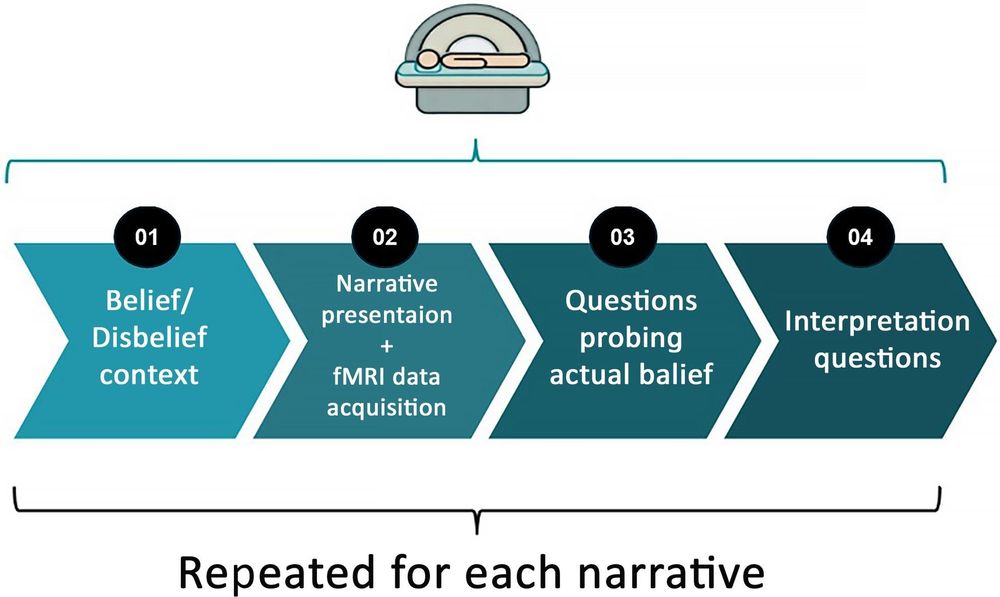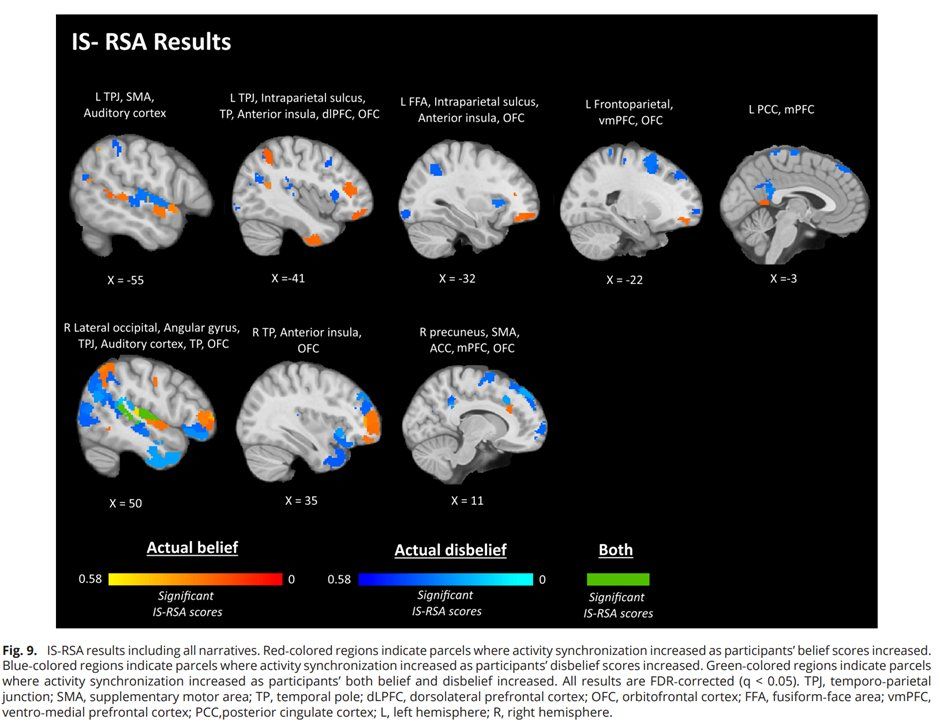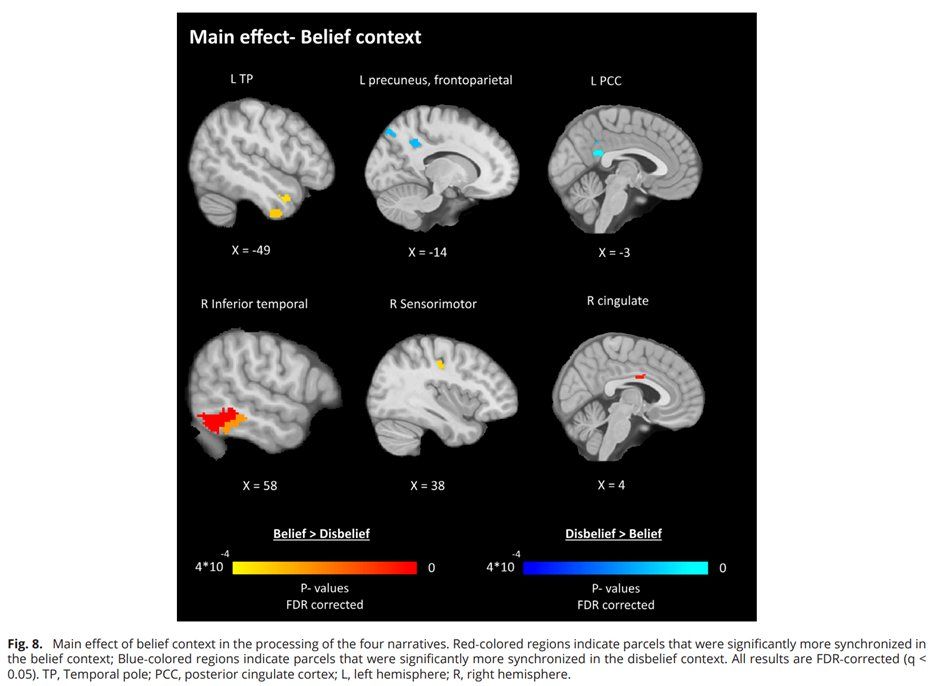
Gabriel Braun
@gabrielbraun.bsky.social
Finally arrived on Bluesky.
Neuroscience PhD student at Tel Aviv University. Social neuroscience, trust/belief, misinformation, language and communication. Film enthusiast. 🏳️🌈
https://gabrielbrauncog.github.io/
Neuroscience PhD student at Tel Aviv University. Social neuroscience, trust/belief, misinformation, language and communication. Film enthusiast. 🏳️🌈
https://gabrielbrauncog.github.io/
But wont most random people (not philosophers/scientists) percieve color to be more of a physical property? I think it will be a very skewed split of responses
July 12, 2025 at 6:59 PM
But wont most random people (not philosophers/scientists) percieve color to be more of a physical property? I think it will be a very skewed split of responses
There are things similar to pain, like heat/cold. But maybe something being 'beautiful'? You can see it as your own perception or the object/scene having some kind of "physical" beautiful properties? Doesn't 100% fit, but somewhat close
July 12, 2025 at 6:57 PM
There are things similar to pain, like heat/cold. But maybe something being 'beautiful'? You can see it as your own perception or the object/scene having some kind of "physical" beautiful properties? Doesn't 100% fit, but somewhat close
Looks really cool. Congratz to all involved! Can't wait to read it more thoroughly :)
July 2, 2025 at 1:46 PM
Looks really cool. Congratz to all involved! Can't wait to read it more thoroughly :)
Great job and congratulations!
June 28, 2025 at 9:12 PM
Great job and congratulations!
Neat! Congratulations and good job!
June 15, 2025 at 8:13 PM
Neat! Congratulations and good job!
My intuition was: less visual imagery -> probably more 'rational' (?)-> more leaning towards deterministic views in general + anti free will views
But maybe it's just me basing it on myself (I can't even imagine my parents, they're just blobs)
But maybe it's just me basing it on myself (I can't even imagine my parents, they're just blobs)
June 15, 2025 at 7:11 PM
My intuition was: less visual imagery -> probably more 'rational' (?)-> more leaning towards deterministic views in general + anti free will views
But maybe it's just me basing it on myself (I can't even imagine my parents, they're just blobs)
But maybe it's just me basing it on myself (I can't even imagine my parents, they're just blobs)
Neat! Also happy to personally correspond with the correlation's direction
June 15, 2025 at 6:09 PM
Neat! Also happy to personally correspond with the correlation's direction
Totally agree there’s a lack of neuroscientific work on misinformation. Honestly, even the basics of belief vs. disbelief in information is surprisingly underexplored.
We just released a new paper, and our very first sentence makes exactly that point.
www.pnas.org/doi/10.1073/...
We just released a new paper, and our very first sentence makes exactly that point.
www.pnas.org/doi/10.1073/...

Shared disbelief and shared belief: Belief and disbelief as drivers of interpersonal neural synchronization during narrative processing | PNAS
Despite living in an era where the mere concept of truth is increasingly contested,
the cognitive processes underlying the processing of informatio...
www.pnas.org
June 13, 2025 at 10:43 PM
Totally agree there’s a lack of neuroscientific work on misinformation. Honestly, even the basics of belief vs. disbelief in information is surprisingly underexplored.
We just released a new paper, and our very first sentence makes exactly that point.
www.pnas.org/doi/10.1073/...
We just released a new paper, and our very first sentence makes exactly that point.
www.pnas.org/doi/10.1073/...
Together, the results show how (dis)belief shapes narrative processing. Behaviorally, belief bias supports the notion of belief as a cognitive default, while neural patterns show belief and disbelief drive distinct processing, shared across like-minded listeners. 6/6
June 9, 2025 at 7:00 PM
Together, the results show how (dis)belief shapes narrative processing. Behaviorally, belief bias supports the notion of belief as a cognitive default, while neural patterns show belief and disbelief drive distinct processing, shared across like-minded listeners. 6/6
Neural synchrony associated with actual belief revealed broader patterns. High belief and high disbelief led to distinct activation patterns, which were unique to each narrative. This suggests shared interpretations shaped by how much participants believed (or disbelieved). 5/6

June 9, 2025 at 7:00 PM
Neural synchrony associated with actual belief revealed broader patterns. High belief and high disbelief led to distinct activation patterns, which were unique to each narrative. This suggests shared interpretations shaped by how much participants believed (or disbelieved). 5/6
Now to brain processing: context shaped neural synchrony. Some regions synced more in belief contexts, others in disbelief, but never both. Disbelief boosted synchrony in cognitive control regions (Exp 1) + DMN (Exp 2, pic), while belief was focused in the DMN (Exp 2, pic). 4/6

June 9, 2025 at 7:00 PM
Now to brain processing: context shaped neural synchrony. Some regions synced more in belief contexts, others in disbelief, but never both. Disbelief boosted synchrony in cognitive control regions (Exp 1) + DMN (Exp 2, pic), while belief was focused in the DMN (Exp 2, pic). 4/6
Let’s start with behavior: did actual belief match the context? The answer was no! Even when told the witness was lying, many still chose to believe. And the mismatch wasn’t random, it consistently leaned toward belief. Some call it “truth bias,” but I prefer belief bias. 3/6
June 9, 2025 at 7:00 PM
Let’s start with behavior: did actual belief match the context? The answer was no! Even when told the witness was lying, many still chose to believe. And the mismatch wasn’t random, it consistently leaned toward belief. Some call it “truth bias,” but I prefer belief bias. 3/6
In practice, participants heard testimonies under belief/disbelief contexts while we scanned their brain activity. Afterward, they rated how much they actually believed the speaker. We then asked: how synchronized were their brains with others? And did belief boost synchrony? 2/6
June 9, 2025 at 7:00 PM
In practice, participants heard testimonies under belief/disbelief contexts while we scanned their brain activity. Afterward, they rated how much they actually believed the speaker. We then asked: how synchronized were their brains with others? And did belief boost synchrony? 2/6
How do belief and disbelief shape how the brain processes narratives? Unlike discrete facts, narratives push us to actively build interpretations. We manipulated contextual belief (told if the speaker is lying/truthful) and measured actual belief. Then looked at the brain. 1/6
June 9, 2025 at 7:00 PM
How do belief and disbelief shape how the brain processes narratives? Unlike discrete facts, narratives push us to actively build interpretations. We manipulated contextual belief (told if the speaker is lying/truthful) and measured actual belief. Then looked at the brain. 1/6

